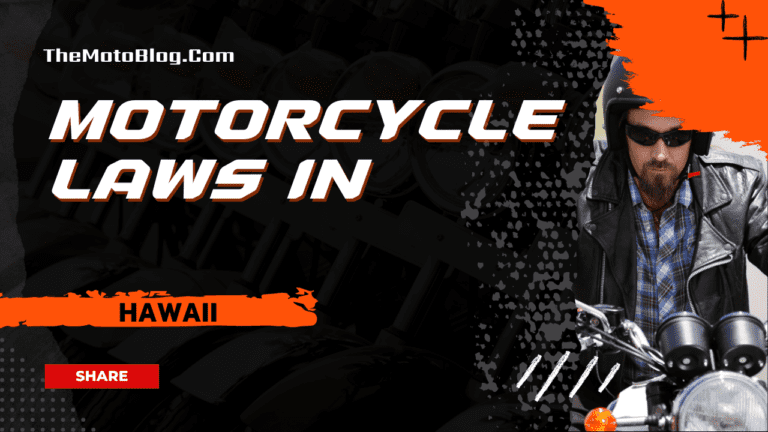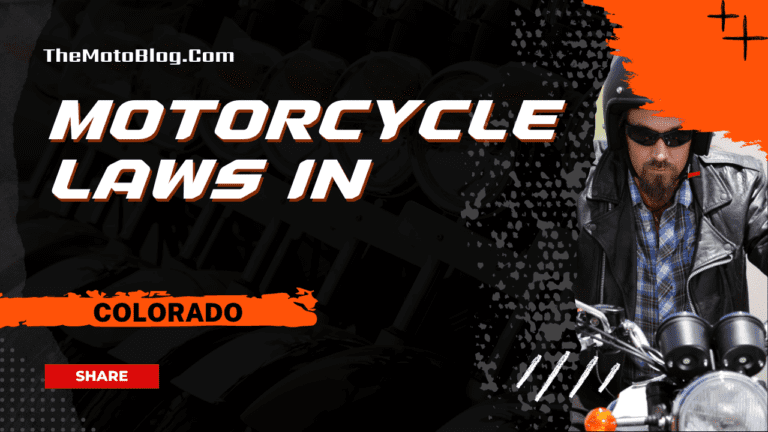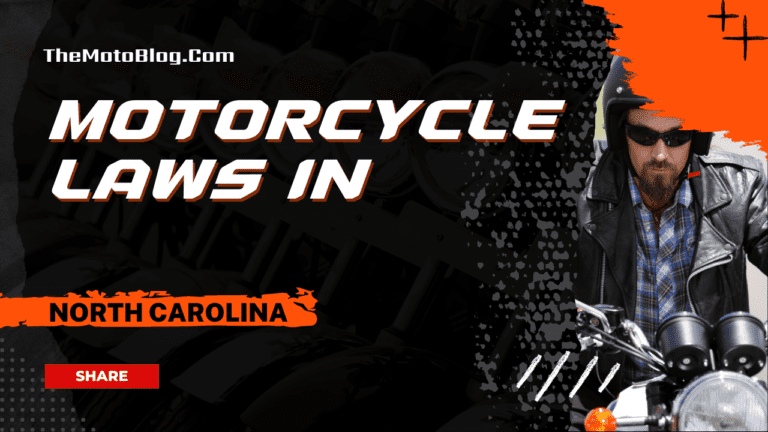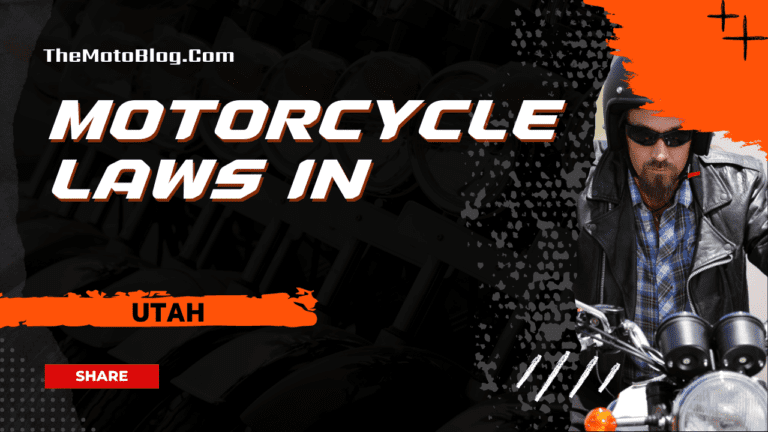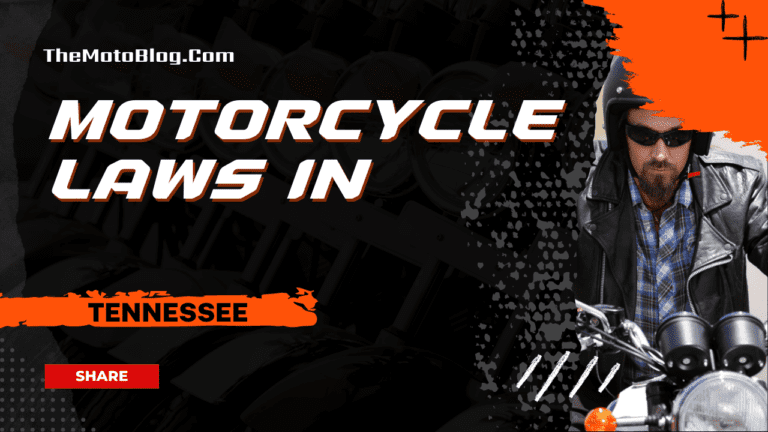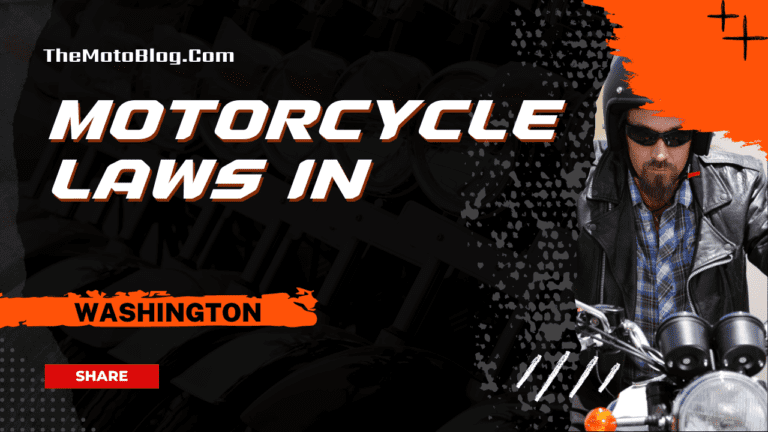Motorcycle Laws in California: An Expert’s Guide to Safe and Legal Riding
Navigating the roadways on two wheels can be a thrilling experience, but it’s also critical to understand and abide by the motorcycle laws in California. Whether you’re a resident rider or planning a visit to this beautiful state, I’m here to help you grasp these regulations. It’s not just about staying out of trouble; it’s also about ensuring your safety and that of other road users.
California has distinctive regulations regarding motorcycle usage. These vary from helmet rules to lane splitting guidelines, each designed with the rider’s safety in mind. Understanding these laws will allow you to enjoy your ride while maintaining peace of mind.
Key Takeaways
- It’s mandatory for all motorcycle riders and passengers in California to wear helmets that meet the U.S. Department of Transportation’s safety standards.
- Lane splitting is legal in California, but should be done safely and responsibly.
- To legally operate a motorcycle in California, you need a Class M1 license or endorsement which requires completing an approved motorcycle safety course, passing both written and skills tests, and paying required fees.
- Motorcycles in California must have certain key components including front and rear turn signals, a mirror mounted on the left handlebar, and handlebars that aren’t higher than six inches above shoulder height when seated.
- Motorcycles need footrests for passengers and two rearview mirrors installed.
- All riders need to wear helmets compliant with U.S. Department of Transportation (DOT) standards while riding in California regardless of their age.
- It’s mandatory for all motorcyclists in California to carry valid insurance at all times with minimum set liability limits.
- It’s illegal to operate a motorcycle with a blood alcohol concentration (BAC) of 0.08% or higher in California. Penalties for being caught can include fines, jail time, and license suspension.
- Violating motorcycle laws can lead to penalties including hefty fines, suspension of licenses or even jail time.
Motorcycle laws in California are comprehensive, focusing on various safety aspects such as mandatory helmet usage for all riders, regulations that permit lane splitting under certain conditions, and requirements for emissions standards. Neighboring states each have unique motorcycle laws that differ from California’s approach. For example, Nevada’s motorcycle laws stress the importance of proper eye protection and handlebar height, whereas Arizona’s motorcycle laws regulate helmet usage for riders under 18 and have specific rules regarding mirrors and passenger seats. In Oregon’s motorcycle laws, helmet requirements and restrictions on carrying passengers on public roads are highlighted. Further east, motorcycle laws in Utah include stipulations for headlamps and other lighting devices, while motorcycle regulations in Hawaii, though not a neighboring state, have unique requirements due to its island geography. A nuanced understanding of motorcycle laws in California and its neighboring states helps riders navigate the diverse regulatory landscape of the West Coast and surrounding regions, ensuring a safe and legal riding experience.
Understanding California’s Motorcycle Laws
When it comes to motorcycle laws, California has some unique rules. I’ll take you through these regulations in a detailed yet easy-to-understand manner.
First off, let’s talk about helmet laws. It’s mandatory for all motorcycle riders and passengers in California to wear helmets meeting the U.S. Department of Transportation’s safety standards. That’s right, no matter your age or experience level, if you’re on a motorcycle, you have to have a DOT-compliant helmet strapped onto your head.
Moving over to lane splitting – yes it’s legal! In 2016, California became the first state in the country to formally legalize this practice where motorcyclists ride between lanes of traffic. However, riders need to do it safely and responsibly.
Now let’s touch base on licensing requirements. To legally operate a motorcycle in California, you need a Class M1 license or endorsement. Here are few steps towards obtaining one:
- Completion of an approved motorcycle safety course.
- Passing both written and skills tests.
- Payment of the required fees.
| Requirement | Details |
|---|---|
| Safety Course | Mandatory |
| Written Test | Mandatory |
| Skills Test | Mandatory |
| Fees | Mandatory |
Finally we come across equipment requirements. There are several key components that your bike must have:
- Front and rear turn signals
- A mirror mounted on the left handlebar
- Handlebars that aren’t higher than six inches above shoulder height when seated
These features ensure that motorcycles meet road safety standards while ensuring rider comfort as well.
Helmet Requirements for Motorcyclists
California’s motorcycle laws are quite strict when it comes to helmet use. It’s mandatory for all riders, regardless of age or riding experience, to wear a helmet while operating a motorcycle on public roads. There’s no leeway in this law – even passengers need to wear helmets.
Motorcycle helmets in California must meet specific safety standards set by the U.S. Department of Transportation (DOT). They should have an impact-absorbing liner, sturdy chin straps and they must cover most of the rider’s head. Helmets that adhere to these requirements will have a DOT sticker affixed on their backside.
Let me share some statistics about California motorcyclists’ compliance with helmet laws:
| Year | Number of Riders Wearing Helmets |
|---|---|
| 2018 | 97% |
| 2019 | 96% |
| 2020 | 95% |
These figures show that most riders do comply with the state’s helmet law.
One common question I get is whether half-helmets or “skull caps” are legal in California. The answer is yes, but only if they meet DOT standards. Also note that novelty helmets and those without the DOT sticker fall short of the requisite criteria and are therefore illegal.
Below are some key points for you to remember:
- All motorcyclists and their passengers must wear helmets.
- Helmets must meet DOT safety standards.
- Half-helmets or skull caps are legal if they fulfill these requirements.
- Novelty helmets or those without a DOT sticker are not legal.
Lane Splitting: What It Means in California
Let’s delve into the details of this unique law. Back in 2016, California Assembly Bill No. 51 was passed which made lane splitting officially legal. This bill defines lane splitting as driving a motorcycle between rows of stopped or moving vehicles in the same lane. The important part to remember is that it must be executed safely.
A study conducted by UC Berkeley found some interesting results:
| Accident Rate | |
|---|---|
| Motorcycles not involved in lane-splitting | 60% |
| Motorcycles involved in lane-splitting at speeds less than or equal to 50 mph | 45% |
However, safety largely depends on speed differences. If motorcyclists are traveling at speeds more than 10 mph faster than other traffic while lane-splitting, accident rates shoot up.
This doesn’t mean you can zip through traffic recklessly though! There are guidelines provided by the California Highway Patrol (CHP):
- Don’t exceed speed limits.
- It’s safer to split lanes between the number one and two lanes.
- Consider factors such as lighting conditions and road surface when deciding whether to split lanes.
Sound Regulation and Muffler Laws
Now, let me guide you through these regulations. Let’s start with the California Vehicle Code Section 27202, which prohibits modifications that increase a motorcycle’s exhaust noise level above that emitted by the vehicle as originally manufactured.
The state doesn’t stop at just setting a base rule though. It goes further to establish maximum allowable sound levels for motorcycles depending on their year of manufacture:
| Year of Manufacture | Maximum Allowable A-Weighted Sound Level (dB) |
|---|---|
| Before 1970 | 92 dB |
| 1970 – 1972 | 88 dB |
| 1973 – 1974 | 86 dB |
| After 1985 | 80 dB |
Note: These values are measured at a distance of fifty feet from the centerline of travel.
On top of this, there’s another major piece of legislation you need to know — Senate Bill No.435. This law states that every street-legal motorcycle built after January 1st, 2013 should come equipped with an EPA-stamped muffler.
In case you’re thinking ‘I’ll slip under the radar’, remember this: if your bike is too loud or missing its EPA stamp, you could face fines ranging from $50 to $100 for a first offense and up to $250 for repeat violations.
Motorcycle Equipment Standards in the Golden State
If you’re riding a motorcycle in California, it’s crucial to adhere to the state’s equipment standards. Not only are these rules law, but they’re designed for your safety too. Let me break down some of these key requirements:
Headlights and Taillights: Every motorcycle must have operational headlights and taillights. It’s not just a nighttime rule – they need to be on during daylight hours as well.
Helmets: This one is non-negotiable. All riders and passengers are required by law to wear a U.S Department of Transportation (DOT) compliant helmet when on a motorcycle.
As for exhaust systems, modifications that increase noise levels beyond state limits aren’t allowed. That means if your bike sounds like thunder rolling down the street, there’s a good chance it’s violating regulations.
| Motorcycle Equipment | Requirement |
|---|---|
| Headlights & Taillights | Must be operational at all times |
| Helmets | Must comply with DOT standards |
| Exhaust Systems | Can’t exceed state noise limits |
Now let’s discuss handlebars. In California, handlebars should never sit more than six inches above the rider’s shoulders when seated. So those high-rise ape hangers might look cool, but they could get you into trouble with law enforcement.
Lastly, motorcycles need footrests for passengers and two rearview mirrors installed—one on each side of the vehicle—to meet California road safety laws.
- Motorcycles must have footrests if carrying passengers
- Two rearview mirrors needed (one on each side)
Licensing Requirements for California Bikers
When it comes to riding a motorcycle in the Golden State, there are specific licensing requirements that you’ve got to meet. First off, if you’re under 21, California law requires you to complete both a motorcycle rider training course and the motorcycle skills test at a local Department of Motor Vehicles (DMV) office.
Even if you’re over 21, I’d still recommend taking the training course. It’s not just about ticking boxes on legal requirements – it’s about becoming a safer rider too! The course can give you essential riding skills and knowledge that’ll keep you safe on the road.
In terms of licenses, California has two classes of motorcycle licenses: M1 and M2. Here are their key differences:
- M1 license: Allows operation of any two-wheel motorcycles and motor-driven cycles.
- M2 license: Only allows operation of motorized bicycles or mopeds.
To get an M1 or M2 license, firstly, pass your written test at DMV. Once that’s done with, below is what follows:
- Under 21? You’ll have to provide proof of completion from an approved motorcycle rider training program.
- Over 21? You might choose between completing an approved motorcycle rider training program OR scheduling an appointment with DMV for a driving test.
Remember though – even after getting your learner’s permit post passing the written test, there are certain restrictions till you get your full blown driver’s license:
| Learner’s Permit Restrictions | Description |
|---|---|
| No passengers | Can’t carry any passengers |
| Daylight only | No night rides allowed |
| No freeways | High-speed roads aren’t permitted |
Finally let me remind – irrespective of age – all riders need to wear helmets compliant with U.S. Department of Transportation (DOT) standards while riding in California. In fact, this is one state where helmet laws are strictly enforced!
The Role of Insurance for Motorcyclists
Motorcycle insurance plays a crucial role in California, given the state’s stringent laws. Financial responsibility is key and it’s mandatory for all motorcyclists to carry valid insurance at all times.
The minimum liability limits are outlined below:
| Liability | Minimum Limit |
|---|---|
| Bodily injury per person | $15,000 |
| Bodily injury per accident | $30,000 |
| Property damage | $5,000 |
These figures represent the least amount you can carry but I’d recommend considering higher limits. After all, medical bills and repair costs can easily exceed these amounts.
California is also a tort state which means if you’re found responsible for an accident, you’ll need to cover the other party’s expenses. Without sufficient coverage, your personal assets could be at risk.
On top of basic liability coverage, there are several optional coverages that I suggest you consider:
- Uninsured/Underinsured Motorist Coverage: This kicks in when the other driver doesn’t have enough or any insurance.
- Collision Coverage: Helps pay for repairs to your bike if it gets damaged in an accident.
- Comprehensive Coverage: Covers theft or damage from events like fire or vandalism.
Remember that while these coverages aren’t required by law, they provide valuable protection. They offer peace of mind knowing that you’re covered no matter what happens on the road.
Let me emphasize this: riding without insurance isn’t just illegal – it’s risky. If caught, penalties include hefty fines and suspension of your license. And let’s not forget about potential financial disaster if you cause an accident without proper coverage in place.
DUI Laws: Implications for Bike Riders
California’s DUI laws aren’t just for four-wheeled vehicles; they apply to motorcycles as well. If you’ve consumed alcohol and decide to hit the road on your bike, you’re playing a risky game with safety and legality.
It’s crucial to understand that in California, it’s illegal to operate a motorcycle with a blood alcohol concentration (BAC) of 0.08% or higher. This limit is even lower if you’re under 21 years old — a mere 0.01% could spell trouble.
Here’s what happens when you get caught riding under the influence:
- First Offense: Expect hefty fines up to $2,000, imprisonment from two days up to six months, and license suspension for six months.
- Second Offense (within ten years): Fines can escalate up to $2,500, jail time increases from ten days up to one year, and you may lose your license for two whole years.
- Third Offense (within ten years): Now we’re talking about fines potentially reaching $3,000, imprisonment between 120 days and one year plus mandatory completion of an alcohol program at your own expense.
Let me show this in tabular form:
| Offense | Fine | Jail Time | License Suspension |
|---|---|---|---|
| First offense within ten years | Up to $2k | Two days – Six months | Six months |
| Second offense within ten years | Up to $2.5k | Ten days – One year | Two years |
| Third offense within ten years | Up to $3k | 120 days – One Year + Mandatory Alcohol Program Completion | Varies |
Remember folks! It doesn’t end there. A DUI conviction will also lead to increased insurance premiums which can burn holes in your pocket over time.
My advice? Don’t drink and ride! It’s not worth risking your life or someone else’s – not forgetting the severe legal consequences that come along with it. Stay safe out there!
Penalties and Consequences of Law Violations
Being a motorcycle enthusiast in California, I’m well aware of the penalties that come with violating our state’s laws. There are consequences for ignoring regulations, which could include hefty fines, suspension of your license or even jail time.
For instance, if you’re caught riding without a helmet, it’s not just about risking your safety. California law states that all motorcycle riders must wear helmets that meet certain safety standards. If you’re caught without one, expect to be hit with a fine. For first-time offenders the minimum fine is $197, but repeat offenders can see this number climb significantly.
Furthermore, lane splitting – a common practice among motorcyclists where they navigate between slow moving or stopped traffic- is legal in California under specific conditions only. If you don’t adhere to these rules and cause an accident while lane splitting, the penalties can be severe.
Let’s talk about DUIs – driving under the influence. They’re taken very seriously in our state and rightly so! The penalty for first-time DUI offenders includes mandatory jail time (48 hours to 6 months), fines ranging from $390 to $1000 plus penalty assessments which could total up to around $3,600, and your driver’s license may be suspended for 6 months.
Here are those numbers again:
| Offense | Fine | Jail Time |
|---|---|---|
| No Helmet | Min $197 | N/A |
| Lane Splitting Accident | Varies | Possible |
| DUI | $390-$3600+ | 48 hours – 6 months |
There’s also potential for compulsory attendance at alcohol education programs and installation of ignition interlock devices on any vehicle you drive.
Wrapping Up: Complying with Motorcycle Laws in California
We’ve navigated through the twists and turns of California’s motorcycle laws together. From helmet regulations to lane splitting rules, we’ve covered it all. Now that we’re at the end, let’s take a moment to reflect on what we’ve learned.
Firstly, safety is paramount when you’re out there on your two wheels. Remember:
- Always wear a DOT-approved helmet.
- Make sure your bike has the right mirrors and handlebars.
- Don’t forget about those turn signals!
Secondly, riding etiquette and traffic laws are just as essential for motorcyclists as they are for other drivers. Here’s what I can’t stress enough:
- Respect speed limits
- Follow lane-splitting guidelines
- Never ride under the influence
And last but not least, it’s worth noting that being informed about motorcycle laws doesn’t just keep you safe – it keeps everyone else safe too. That’s why I’ve taken the time to break down these complex legal terms into something more digestible.
So before you rev up your engine and hit the California roads again, make sure you’re fully prepared by understanding all these rules thoroughly. I hope this guide has been helpful in making you a more responsible rider.
Motorcycle Laws in the US By States
If you liked this article, then please subscribe to our YouTube Channel for more Bike Videos. You can also find us on Instagram, Twitter and Facebook.
Disclosure: As an Amazon Associate, I earn from qualifying purchases. Read more about Amazon Affiliate Disclaimer.

Vishwanath Mathpati
I am Vishwanath Mathpati, a full-time Blogger and Motorcyclist from Bidar, Karnataka. I love writing about my Motorcycles Stories and Riding Gears on this blog.
Know More About Me.


